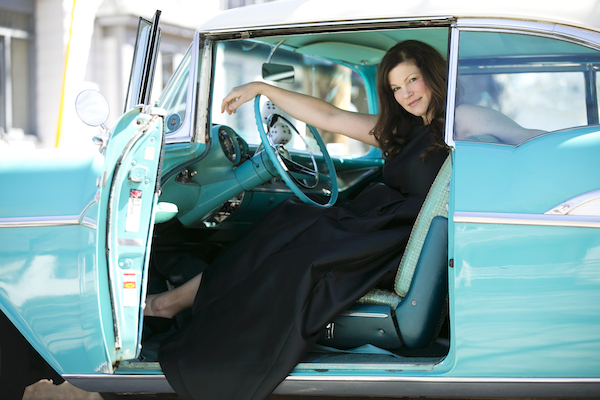Oct 28, 2025 10:47 AM
In Memoriam: Jack DeJohnette, 1942–2025
Jack DeJohnette, a bold and resourceful drummer and NEA Jazz Master who forged a unique vocabulary on the kit over his…

Singer Staci Griesbach’s debut is devoted to jazz arrangements of songs popularized by country star Patsy Cline (1932–’63).
(Photo: Kim Thiel)Staci Griesbach’s story begins in the rural Midwest. She grew up on a Wisconsin farm, where her parents raised heifers. Corn, soybeans and hay filled the family field, and four-track tapes of Conway Twitty and Ernest Tubb filled the glove compartment. At rodeos and county fairs, she would watch wide-eyed as Alan Jackson or Faith Hill entertained.
Eventually, Griesbach developed her own singing style, infused with her phrasing on piano and saxophone, which she played in high school band. Still, country music was her base, and she pondered moving to Nashville to pursue stardom. Instead, after college, she moved to Los Angeles—just for a year, she promised herself—to check it out before heading to Music City. Once in L.A., Griesbach found herself drawn to the city’s jazz circles, taking vocal lessons and picking up some gigs. When the time felt right to make an album, though, the vocalist began asking herself some serious questions.
“[O]ne day when I came home from yoga, I put Patsy Cline’s Greatest Hits on the record player,” she recalled. “The minute the needle went down, I was like, ‘Hello? What was I thinking? Maybe this is my thing. My teachers could be different from someone else’s teachers.’ Is that a bad thing? Is that a good thing? Why can’t it just be a different thing?”
Griesbach’s debut, My Patsy Cline Songbook, was born of that revelation. Its 16 songs, each delivered in a jazz setting, are hallmarks in the late country star’s repertoire. The program features the work of top-notch arrangers and players from the world of jazz (pianist Tamir Hendelman and guitarist Bruce Forman) and the world of country (pedal steel guitarist Rich Hinman). Griesbach achieves her aim of paying tribute not through imitation, but by exploring new possibilities through her own artistry.
“Walkin’ After Midnight” is transformed into a spectral rumination, with mallets casting deep indigo shades, rather than rhythms, on cymbals and drums, with pianist Jeremy Siskind reforming the chord changes into moody and unresolving noir harmonies.
Every performance is an experiment whose payoff has everything to do with Griesbach’s guidance.“Staci let me know that she wanted to find places where these two musics could meet,” Hendelman said. “I thought that was a beautiful idea. For example, she brought in this song, ‘Leavin’ On Your Mind.’ Something about its melody reminded me of ‘Someone To Watch Over Me.’ I thought that maybe we could play with that, hint at it but not really give it away until halfway through the solo.”
“That was an ‘aha’ moment,” Griesbach explained with a laugh. “We were at [Hendelman’s] piano and as he played with the chord progression, it was like, ‘Oh, yeah!’ Then we thought about the juxtaposition of the lyric of ‘If you’ve got leaving on your mind, tell me now.’ The spiritual connotation in the background is, ‘You’re looking for someone to watch over you.’ Isn’t that beautiful?” DB

Jack DeJohnette boasted a musical resume that was as long as it was fearsome.
Oct 28, 2025 10:47 AM
Jack DeJohnette, a bold and resourceful drummer and NEA Jazz Master who forged a unique vocabulary on the kit over his…

Goodwin was one of the most acclaimed, successful and influential jazz musicians of his generation.
Dec 9, 2025 12:28 PM
Gordon Goodwin, an award-winning saxophonist, pianist, bandleader, composer and arranger, died Dec. 8 in Los Angeles.…

Nov 13, 2025 10:00 AM
For results of DownBeat’s 90th Annual Readers Poll, complete with feature articles from our December 2025 issue,…

Flea has returned to his first instrument — the trumpet — and assembled a dream band of jazz musicians to record a new album.
Dec 2, 2025 2:01 AM
After a nearly five-decade career as one of his generation’s defining rock bassists, Flea has returned to his first…

To see the complete list of nominations for the 2026 Grammy Awards, go to grammy.com.
Nov 11, 2025 12:35 PM
The nominations for the 2026 Grammy Awards are in, with plenty to smile about for the worlds of jazz, blues and beyond.…








